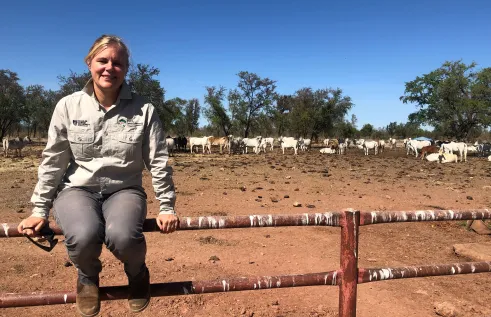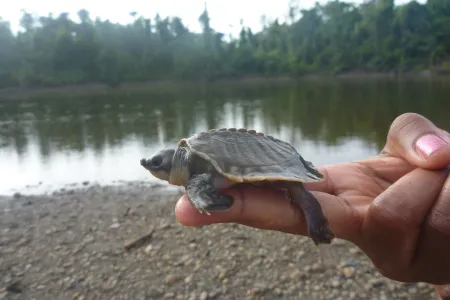News
More than one in five reptile species threatened with extinction globally
New international research shows more than one in five reptile species are threatened with extinction globally, with Australia being a new priority region for better conservation efforts.
Charles Darwin University (CDU) has partnered with NatureServe, the International Union for Conservation of Nature (IUCN) and Conservation International to conduct the research across 24 countries examining more than 10,000 reptile species.
Reptiles in the study include turtles, crocodiles, lizards, snakes, and tuatara, the only living member of a lineage that evolved in the Triassic period approximately 200-250 million years ago.
The study, published in the journal Nature, presents an analysis of the first comprehensive extinction risk assessment for reptiles on the IUCN Red List of Threatened Species.
The research found that at least 21 per cent of all reptile species globally are threatened with extinction across the globe.
Turtles and crocodiles are among the most at-risk species, with more than half of them requiring urgent conservation efforts to ensure their survival.
CDU researcher and study co-author, Dr Carla Eisemberg, highlighted that turtles faced imminent danger of extinction globally.
“Turtles are found to have the lowest proportion of species in protected areas, with only 10 per cent of their range covered, even though they are one of the most endangered vertebrate groups in the world,” Dr Eisemberg said.
The research revealed that efforts to conserve threatened mammals, birds, and amphibians are more likely than expected to co-benefit many threatened reptiles.
Reptiles in forested habitats suffer from threats such as logging and conversion of forests to agriculture.
The study found that 30 per cent of forest-dwelling reptiles are at risk of extinction, compared with 14 per cent of reptiles in arid habitats.
If each of the 1,829 threatened reptiles became extinct, we would lose a combined 15.6 billion years of evolutionary history—including countless adaptations for living in diverse environments.
Co-leader of the study and manager of the IUCN-Conservation International Biodiversity Assessment Unit Neil Cox said the results of the Global Reptile Assessment signaled the need to ramp up global efforts to conserve them.
“Because reptiles are so diverse, they face a wide range of threats across a variety of habitats. A multifaceted action plan is necessary to protect these species, with all the evolutionary history they represent,” Mr Cox said.
The authors note that urgent, targeted conservation measures are still necessary to protect some of the most threatened reptile species, especially island endemic lizards threatened by introduced predators and those that are more directly impacted by humans.
The findings of the global reptile assessment serve as a baseline that can be used to measure changes in extinction risk and track species' recovery progress over time.
Results will also be valuable to help guide the allocation of conservation resources through the identification of Key Biodiversity Areas and other places where active management could prevent extinctions.
The published article can be found here: https://www.nature.com/articles/s41586-022-04664-7
Related Articles

Where rubber meets the road: Old tyres are key to building tougher roads
Almost half of the Northern Territory’s worn-out tyres end up in landfills – with the rest exported interstate for recycling – but a study led by Charles Darwin University (CDU) is repurposing the discarded rubber to build stronger, sustainable roads that meet the NT’s unique needs.
Read more about Where rubber meets the road: Old tyres are key to building tougher roads
Social media subjecting Black women to radicalised digital policing
Influencers use oppression, manipulation and weaponisation to police Black women on social media, according to new research uncovering the entrenched nature of digital racism.
Read more about Social media subjecting Black women to radicalised digital policing
Moo-ving the boundaries: New research evaluates virtual fences for use on NT cattle stations
Cattle producers in Northern Australia face unique challenges when adapting tools like virtual fences on their properties, but new research from Charles Darwin University (CDU) is set to break down the barriers to this technology.
Read more about Moo-ving the boundaries: New research evaluates virtual fences for use on NT cattle stations
